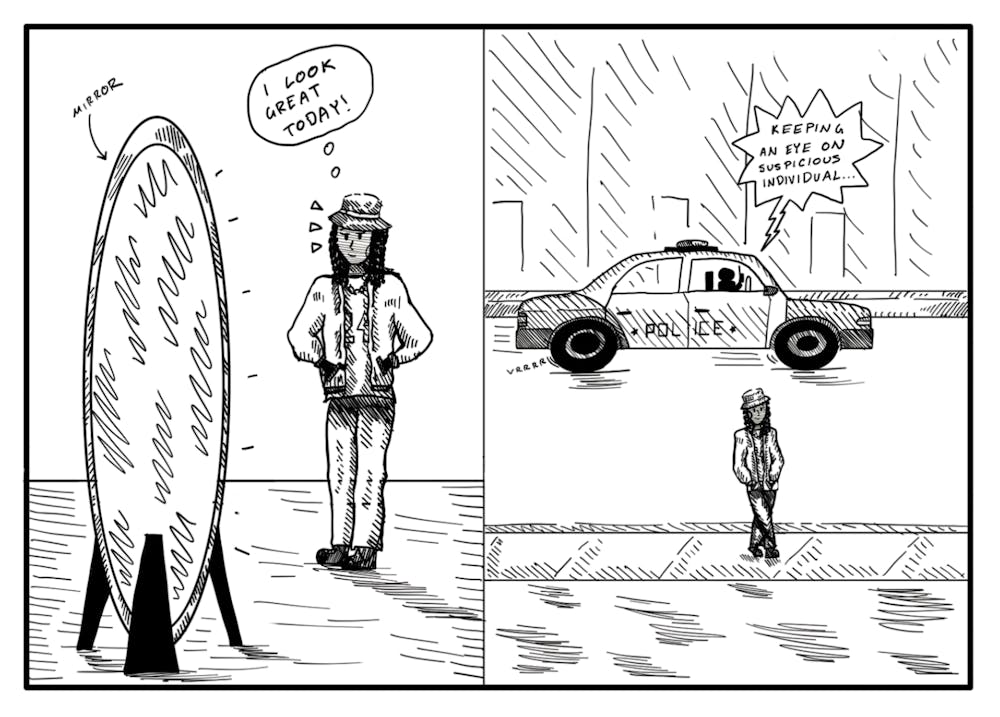The clothes we wear function as both an expression of self and a suit of armor. My first real confrontation with the meaning of clothing beyond functionality came through the age-old classroom debate: should schools require uniforms? Most of my classmates reacted with an “absolutely not.” Uniforms, they argued, were the antithesis of self-expression. They represented an imposition on our bodies and restricted one of the few things we control — how we present our inner selves to the world. But do clothes really do that?
Controversially, I never found the idea of school uniforms all that bad. Throughout K-12, the appeal of saving time in the morning, avoiding the pressure of outfit choices and eliminating class-based distinctions communicated by brands always made sense to me. I also attributed this perspective to my own lack of engagement with fashion; due to financial and time constraints, clothes never felt like an available avenue for self-expression.
The ability to cultivate and present a personal style — especially one that is distinctive or trailblazing — is, in many ways, a privilege. Not everyone has the freedom to experiment, particularly when navigating spaces that demand conformity, like professional environments.
This is further complicated by race, gender and class. Discussions over the policing of Black hair within the workplace reveal how self-expression is not universally tolerated, especially if you cannot assume your own features will be tolerated. When you are already viewed as taking up too much space, you have less freedom to cultivate style. Authenticity is often only tolerated when it aligns with existing power structures.
To have a personal style is to take up space. But first, you have to be allowed in that space. The way we dress shapes how we are perceived, and for young people of color, queer individuals and others whose presence is often deemed excessive or undeserved, the freedom to take up space through clothing is not a given. Recent backlash against DEI initiatives has made it clear that certain bodies in certain spaces are already seen as too much. For some, dressing in a way that fully reflects identity is a risk rather than an opportunity for agency.
Moreover, no style is ever truly personal — clothing, silhouettes, trends — all carry histories. Women, particularly in male-dominated fields, must balance self-expression with the unspoken rules of professionalism. Bodies are read and regulated through clothing; they can’t be too colorful, too drab, too bold or too plain. There’s an expectation to be polished and “put together” in a way that aligns with external standards.
Developing a personal style does not happen in a vacuum. The personal is political. Every clothing choice is a curated statement about identity. The ability to purchase clothing that fully encapsulates one’s identity — high-quality, unique pieces that “tell a story” — is inherently tied to the financial capability to do so. Style is also often a product of consumption; the pursuit of an “authentic” wardrobe can easily slip into an obsession with acquiring rather than expressing.
There is a history, however, of marginalized clothing as a means of both resistance and self-definition. The oversized jerseys, baggy jeans and Timberlands of '90s hip-hop weren’t just aesthetic choices; they were statements of identity and defiance, a way of taking up space outside of white, Western fashion norms. Clothing can be powerful declarations of self.
I've come to enjoy fashion, learning to approach it on my own terms and to express myself the way I want to be seen. To dress as an act of expression is a fulfilling artistic practice, and it helps you grow to thoughtfully approach the history and craftsmanship behind our clothing.




